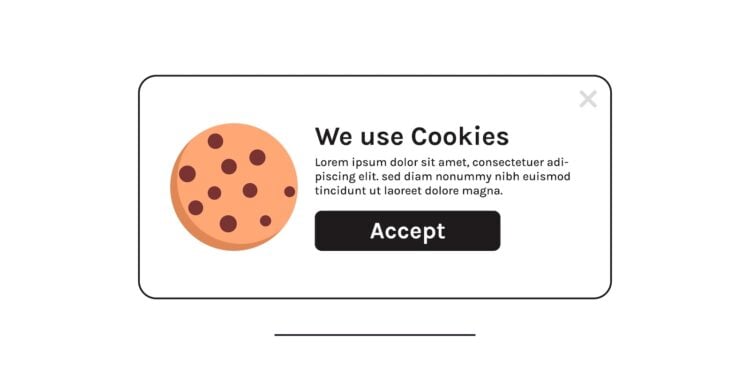The EU is working on a change that aims to end one of the most annoying elements of the modern internet. Since the introduction of the GDPR, cookie pop-ups have appeared on almost every website, disrupting the browsing experience. The EU is now planning a new system that will largely eliminate these interruptions and significantly simplify data protection.
With the GDPR, the EU set a high standard for the protection of personal data in 2018. Many large technology companies, including Apple, even adopted the regulations globally because it was easier to implement the rules uniformly. The regulation strengthened transparency and control over personal information, but also created an environment in which cookie banners became ubiquitous. While these were intended to protect users, in practice they led to frustration, distracting interfaces, and manipulative designs. This is precisely where the planned reform comes in.
A brief summary of the GDPR
The GDPR is the strongest data protection law ever enacted in the technology sector. It obliges companies to process personal data only when there is a specific and legitimate reason. Data must be stored in encrypted form, it must be disclosed upon request, and individuals have the right to request the deletion of their personal information.
These four core rules created a strong foundation for digital privacy. Although they initially only applied to citizens in the EU, their influence became global. Many international platforms adapted their systems so that people outside the EU also benefited.
The problem with cookies
Cookies are small text files that websites store on devices. They can be useful, for example, when a site recognizes that it has been visited before, or when automatic login is desired because an account has been created. At the same time, they pose a risk because they can collect significantly more information than many people realize.
A well-known example is flight price tracking. When the price of a specific flight is researched, the website registers this activity. On a subsequent visit, the price may appear artificially inflated because the behavior is interpreted as a clear indication of purchase intent.
How cookie banners became a nuisance
The GDPR required websites to obtain consent before setting cookies that are not technically necessary. This was intended to prevent data from being collected without oversight. In practice, however, this led to endless pop-ups.
Many websites went a step further and relied on malicious compliance. Instead of simple choices, they offered confusing menus and deliberately complicated settings. The goal was to make the quick click on "Agree" more appealing than the cumbersome process of declining. This hardly created a genuine choice.
The EU is planning a fundamental change
The EU has recognized that the current system isn't working. Most people reflexively close cookie banners without consciously making a decision. To change this, browsers will serve as the central point of control in the future. A single decision should suffice, and websites must respect this setting.
Instead of having to select privacy settings every time a page is visited, users will now configure their privacy directly in the browser. The EU states that this will significantly simplify the online experience. At the same time, companies will no longer need to obtain consent for harmless features. This includes, for example, automatic login when someone has consciously chosen to create an account.
The transition phase
The final rules will not come into effect until next year. Until then, a transitional solution applies. Websites must offer a simple yes or no choice, without long lists or nested menus. This clear structure prevents manipulative tactics and provides a genuine overview of what is and is not acceptable.
The EU is bringing order to the cookie chaos.
The EU is thus gradually ending one of the biggest annoyances on the internet. The GDPR remains a strong foundation for data protection, but its implementation is becoming more user-friendly. Cookie banners are losing their dominance, and decisions are being centralized. This makes browsing faster and clearer and shows that good privacy doesn't have to be complicated. (Image: Shutterstock / PaleStudio)
- Apple presents the finalists of the App Store Awards 2025
- Cloudflare outage explained: How the worldwide problem occurred
- Gemini 3 sets new AI standards & changes Google's products
- WhatsApp is finally testing two accounts on a single iPhone
- Apple releases new firmware for key accessories
- WhatsApp vulnerability remained unprotected for eight years
- How Apple is creating new titanium components using 3D printing
- Apple releases the major podcast charts for 2025
- The iPhone 17 lifts Apple to its strongest level in China in years.
- Apple loses another key designer amidst ongoing changes
- F1 The Movie: How realistic is a sequel really?
- Apple wins long-running dispute over iPhone camera patents
- iOS 26.2 Beta 3: An overview of the most exciting new features
- iOS 26.2 opens iPhones in Japan to alternative assistants
- iPadOS 26.2 significantly improves Slide Over and Split View
- Apple lays the foundation for open assistant switching in iOS 26.2
- iOS 26.2 introduces 30 days of AirDrop access via codes.
- Apple emphasizes the strength of Apple Silicon on its anniversary
- Apple releases iOS 26.2 Beta 3: New testing phase underway
- Tim Cook could change roles instead of leaving Apple entirely.
- Apple expands Sneaky Sasquatch with a new sticker pack
- Tim Cook in focus: Apple tests market reaction to CEO change
- Apple must pay $634 million in the Masimo patent dispute.
- The iPhone 17 brings a noticeable recovery to Apple's China business.
- Apple COO Jeff Williams is now officially retired.





